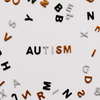Top Ways to Meet an ASD Child’s Sensory Needs When Stuck at Home

Throughout this article, you will discover enjoyable ideas to help you meet the needs of your child within your home setting in a way that can be incorporated easily into your day. In addition, you will learn how to incorporate these activities into your daily routine.
First and foremost, reach out to your child’s school or private therapist. They know your child’s needs and may be able to help you brainstorm ideas to do within your home while social distancing and the “safer at home” order is in place. Each individual with autism has different sensory needs.
I strongly advocate for individualized decisions based on the needs of the individual. There are eight sensory systems involved in sensory processing: visual, auditory, olfactory (i.e., smell), tactile (i.e., touch), taste, vestibular (i.e., change of position, direction, or movement of the head), interoception (i.e., understanding and feeling of what’s going on in your body), and proprioception (i.e., input to the joints and muscles). Individuals need different input depending on how their sensory system is processing information, such as whether it is seeking input, avoiding input, needs calming, or needs alerting.
However, during a time like this, we can rely on some basic principles that will help all individuals. For instance, we never want to pressure or push an individual to try sensory input if he/she is uncomfortable or refusing that input. In addition, proprioceptive input can help individuals both calm and alert their system. Without specific recommendations from a licensed occupational therapist, proprioceptive input will be the most helpful supports to employ.
Below is a list of activities sorted into categories for families and caregivers to try. Remember, one size does not fit all! Do what works for your family and child. Observe your child after the input to determine if it had a positive effect. If so, add it to your list as a strategy to use during this time.
Exercises:
- Wall or chair push-ups
- Roll forward on a therapy ball while weight barring on the arms
- Wheelbarrow walking
- Tug of war games
- Stair jumps
- Wrestle/roughhouse
- Jump on a trampoline
- Throw and catch a weighted ball
- Burpees/planks
- Play hopscotch or jump rope
Chores/Helping Around the House:
- Washing windows/mirrors
- Washing tables/counters
- Carrying laundry baskets to the laundry room
- Mopping floors
- Helping rearrange furniture
- Stacking chairs or other heavy items
- Vacuum
- Dust
- Wash the car
- Pull siblings in a wagon
- Water plants by carrying a heavy watering can
Snacks:
- Chew chewy snacks such as gummy bears, licorice, etc.
- Chew gum
- Drink applesauce or pudding through a straw
- Drink milkshakes and smoothies through a straw
- Chew crunchy foods with back teeth
External Supports:
- Wear Under Armour® clothing
- Wear compression pants/tops
- Wear biking shorts and tight leggings
- Wrap Lycra bands around chair legs, allowing your child to swing his/her legs and receive tension to his/her calves
- Provide weighted blankets or sleeping bags
Fun Family Activities:
- Have a family dance party
- Access GoNoodle®
- Play in your sandbox
- Climb a tree
- Climb on your backyard play set
- Give bear hugs
- Play with slime/play-dough/putty
- Do different animal walks as a family
- Blow bubbles
- Play Twister
Rotating these activities into your daily routine of chores, family time, snack, exercise, and quiet time can be a way to embed sensory input into your day in a very predictable manner. This, in turn, will help individuals with autism accept the activities and be more open to trying them. Alternating these activities before you want your child to focus for extended periods may be helpful for you when trying to provide academic opportunities within your home—or when you want to get your work done or have time to yourself.
This is a challenging time for all of us; these strategies will help you and your family in this journey of social distancing and safer at home orders. Please stay safe and take care!
If you found this article helpful, please consider sharing it on social media or linking to it from your website to help other parents. You may also want to check out our other resources on coping strategies for autism and COVID-19.
Connie Persike, MS, CCC/SLP, is a highly experienced speech-language pathologist and educational consultant. As the founder of CP Consulting, Connie brings 20 years of experience to provide insight, guidance, coaching, and support to school districts, agencies, and families across Wisconsin needing expert direction in working with children. Connie has received extensive and in-depth training in several areas and educational models that inform her work with students across all grade levels, allowing her to customize the coaching, scaffolds, and supports she provides to help staff and students succeed. From positive psychology and Social Thinking methodology to functional communication training (FCT) and instructional coaching, Connie’s mission is to help students increase their success and develop a love of learning. Connie has been invited to present at a state level on a variety of topics such as functional behavioral assessments, positive behavioral supports and interventions, autism, anxiety, and evidence-based interventions. She is a member of the American Speech Hearing Association, the Association of Supervision and Curriculum Development, and the Autism Society of Wisconsin. Connie has been involved in statewide workgroups to help develop and improve core programming in schools and is a published writer for Autism Parenting Magazine. Connie resides in Waunakee, WI, with her husband and daughter. During her free time, she enjoys being with her family, reading, and landscaping. For more info visit the website cpconsulting.us.
This blog post was written by Connie Persike and originally appeared on Autism Parenting Magazine.




